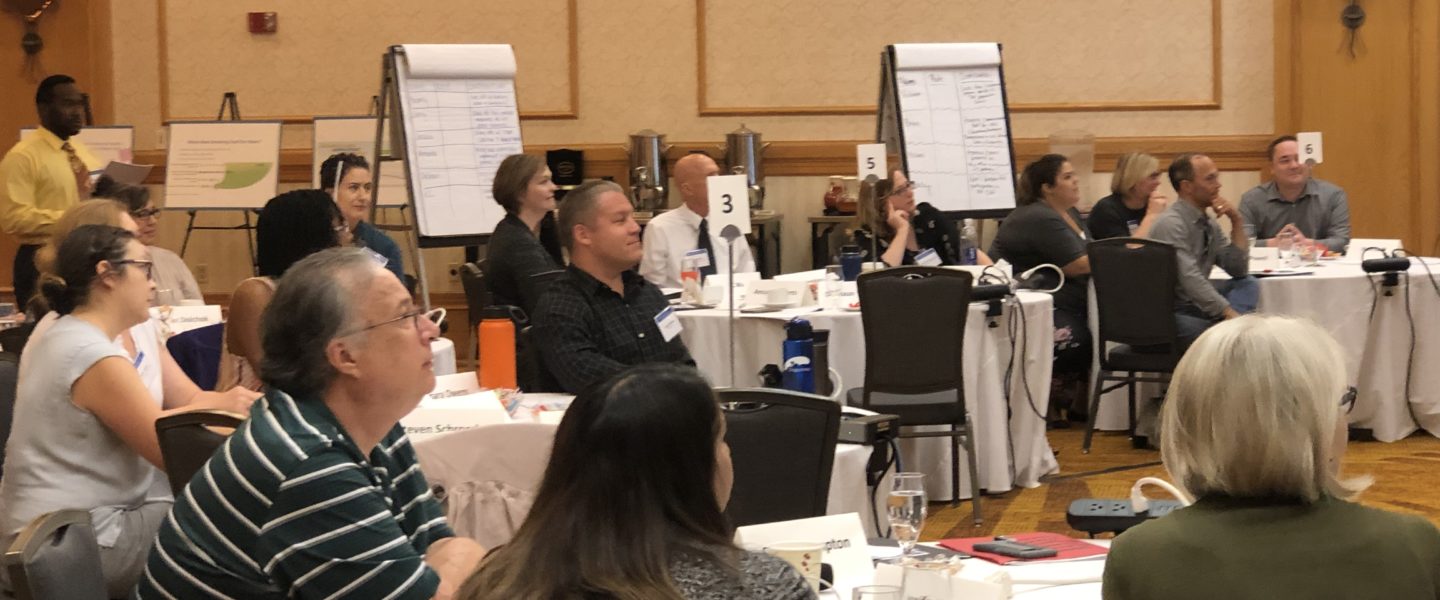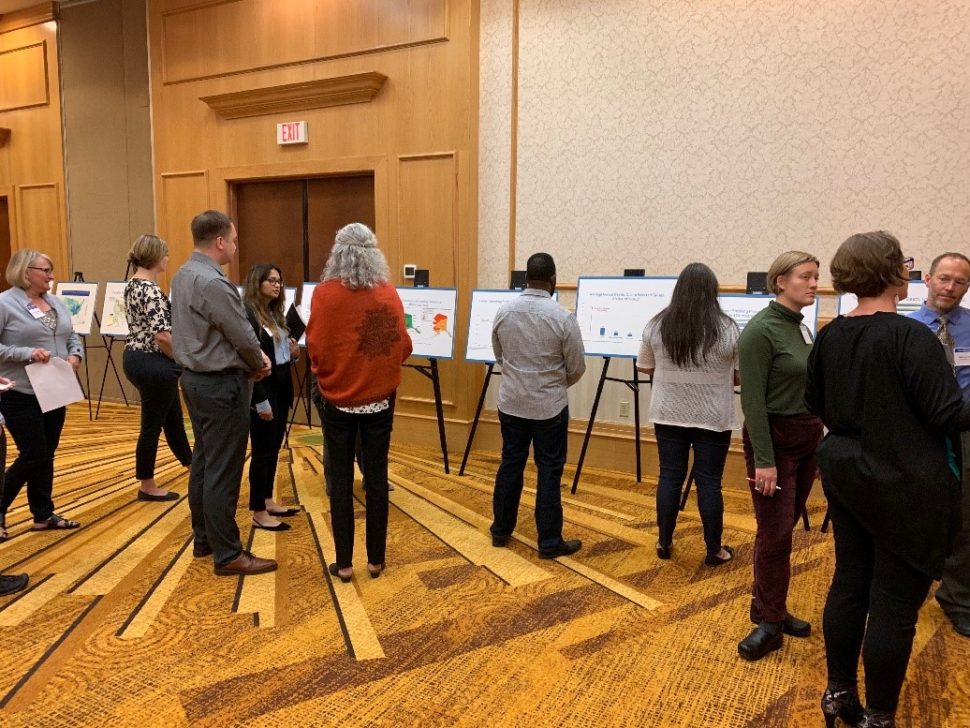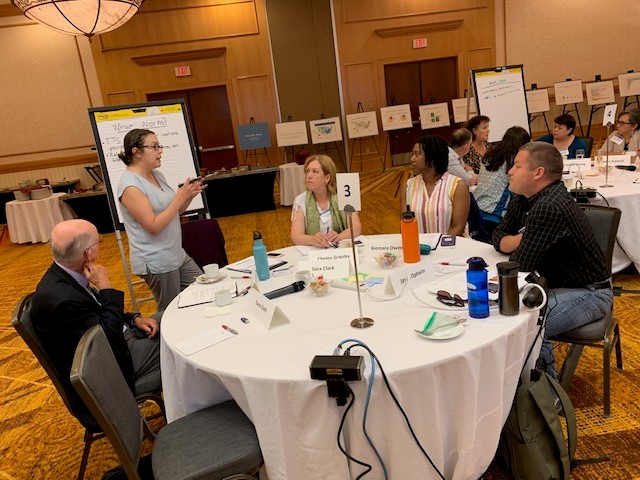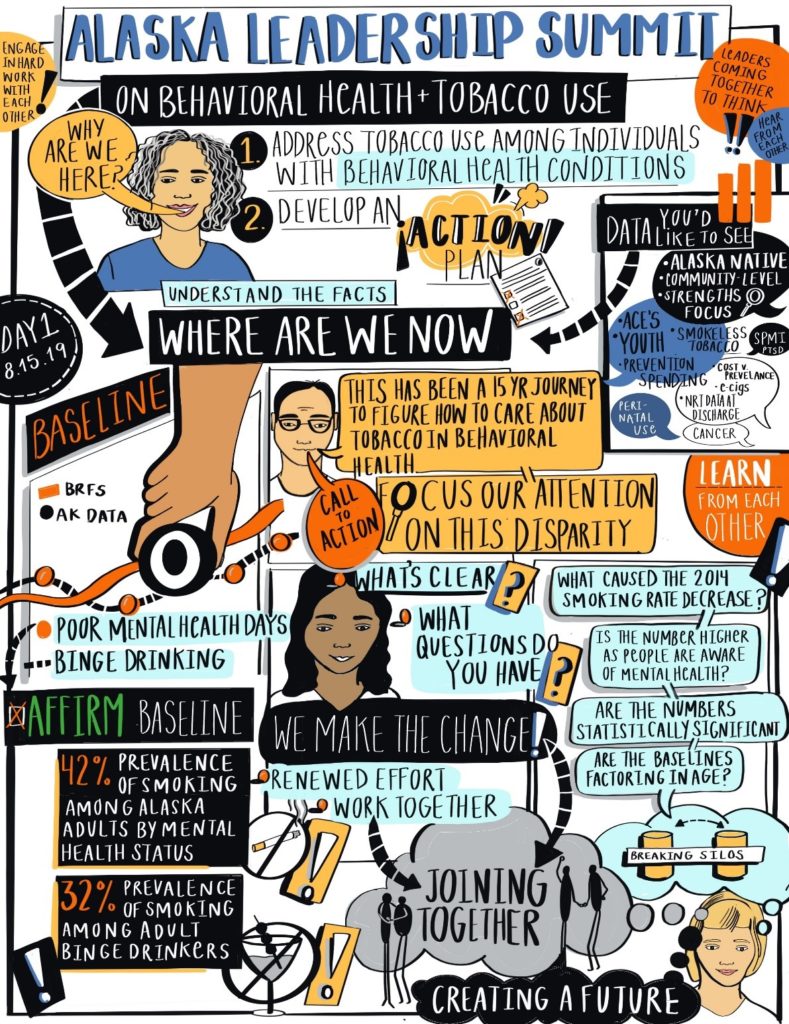Over the past decade, smoking prevalence has decreased among Alaskans; however, when looking at individuals with behavioral health conditions, the numbers tell a different story. While 22% of the general population currently smokes, individuals with serious mental illness and major depression smoke at a rate more than twice that, at 49% and 46% respectively. Similarly, rates of smoking among those who binge drink are twice that of those who do not binge drink. An estimated 700 deaths annually can be attributed to smoking-related diseases, such as cancer, heart disease, and respiratory disease.
The Alaska Division of Public Health, in partnership with the National Behavioral Health Network (NBHN) and the Smoking Cessation Leadership Center (SCLC), with generous support from the CDC and SAMHSA, hosted the Alaska Leadership Summit on Behavioral Health and Tobacco Use to bring together government agencies, provider networks, and community and tribal organizations to collaborate on strategies to tackle these tobacco disparities. Attendees represented 23 organizations including the Division of Behavioral Health, the Anchorage Community Mental Health Services, the Alaska Native Tribal Health Consortium, and Recover Alaska.
In developing the state action plan to combat tobacco use in the state, participants brought their unique expertise to the table regarding challenges faced by rural communities, health disparities among Alaska Natives, and provider experiences from the field. Participants with lived experience further shared their personal success stories and reaffirmed the need for tailored tobacco prevention and cessation strategies.
The final Alaska action plan states the goal of reducing the smoking prevalence of adults who report poor mental health to 35% and adults who report binge drinking to 25% by 2025, a decrease of 7% for both measures. Based on common themes that emerged from group discussions, four strategy committees were formed to identify specific action steps needed to achieve this goal. These committees included communication, education, health systems change, and policy.
Additional illustrations of discussions around smoking prevalence, target goal-setting, and action plan and strategy development are included below.






